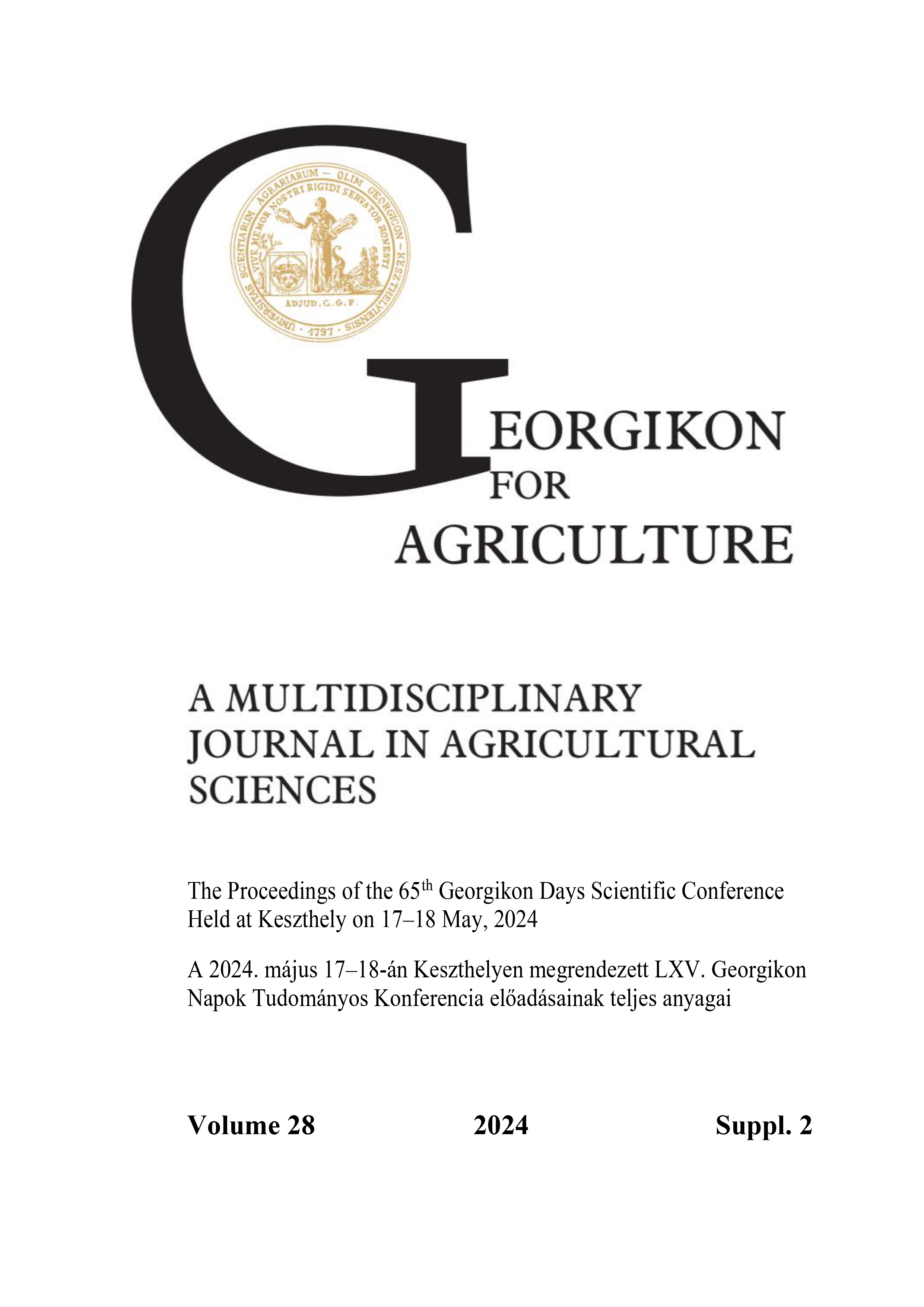Monitoring the Number of Drosophila Suzukii in Berry Plantations
Keywords:
Drosophila suzukii, berries, number of individuals, trapping, IPMAbstract
Drosophila suzukii (Matsumura, 1931), or spotted wing drosophila (SWD), is a potential threat to both berries and stone fruits. It causes great damage to raspberry, grape and blackberry plantations. The species has a lot of host plants on which it can easily overwinter. Unlike common flies, Drosophila suzukii has a serrated ovipositor. This allows it to infect not only overripe, damaged fruits, but also healthy ones that are just ripening. By pest management it is very important to track the number of pest and its swarming throughout the year. The most suitable are vars traps filled with bait-fluid. At Research Station in Fertőd, we have been monitoring the appearance of the SWD and its number for years. During our tests, we used apple cider vinegar, apple cider vinegar + ethanol, and apple vinegar + ethanol + coffee attractants in our traps. It can be stated that changes in temperature and humidity greatly influenced the catch results. It is typical that most of the individuals of SWD, which appear in the largest numbers in blackberries and raspberries, were encountered in our plantations at the end of August and the beginning of September, the peak being in October.
References
Asplen, M. K., Anfora, G., Biondi, A. et al. 2015. Invasion biology of spotted wing Drosophila (Drosophila suzukii): a global perspective and future priorities. Journal of Pest Science. 88, 469–494. https://doi.org/10.1007/s10340-015-0681-z
Briem, F., Dominic, A. R., Golla, B., Hoffmann, C., Englert, C., Herz, A., Vogt, H. (2018) Explorative Data Analysis of Drosophila suzukii Trap Catches from a Seven-Year Monitoring Program in Southwest Germany. Insects. 9, 125. https://doi.org/10.3390/insects9040125
Cini, A., Ioriatti, C., Anfora, G. 2012. A review of the invasion of Drosophila suzukii in Europe and a draft research agenda for integrated pest management. Bulletin of Insectology. 65, 149–160.
Enriquez, T., Colinet, H. 2017. Basal tolerance to heat and cold exposure of the spotted wing drosophila, Drosophila suzukii. Peer J. 23, 3112. https://doi.org/10.7717/peerj.3112 PMID: 28348931; PMCID: PMC5366067.
Kanzawa, T., 1939, Studies on Drosophila suzukii Matsumura. pp. 49
Kenis, M., Tonina, L., Eschen, R. et al. 2018. Non- crop plants used as hosts by Drosophila suzukii in Europe. Journal of Pest Science. 89, 735–748. https://doi.org/10.1007/s10340-016-0755-6
Kinjo, H., Kunimi, Y., Nakai, M. 2014. Effects of temperature on the reproduction and development of Drosophila suzukii (Diptera: Drosophilidae). Appl. Entomol. Zool. 49, 297–304. https://doi.org/10.1007/s13355-014-0249-z
Kirkpatrick, D., McGhee, P. S. 2016. Improving monitoring tools for spotted wing drosophila, Drosophila suzukii. Entomologia Experimentalis et Applicata. 164 (2). https://doi.org/10.1111/eea.12602
Lee, J. C., Shearer P. W., Barrantes L. D., Beers E. H., Burrack H. J., Dalton D. T., Dreves A. J., Gut L. J., Hamby K. A., Haviland D. R. 2013. Trap Designs for Monitoring Drosophila suzukii (Diptera: Drosophilidae). Environmental Entomology. 42, 1348–1355. https://doi.org/10.1603/EN13148
Tochen, S., Dalton, D. T., Wiman N., Hamm, C., Shearer, P. W., Walton, V. M. 2014. Temperature- related developement and population parameters for Drosophila suzukii (Diptera: Drosophilae) on cherry and blueberry. Environmental Entimology. 43 (2), 501–510. https://doi.org/10.1603/EN13200
Zerulla, F. N., Schmidt, S., Streitberger, M., Zebitz, C. P. W., Zelger, R. 2015. On the overwintering ability of Drosophila suzukii in South Tyrol. Journal of Berry Research. 5 (1), 41–48. https://doi.org/10.3233/JBR-150089
Downloads
Published
Issue
Section
License
Copyright (c) 2024 Csilla Gombkötő, Ágnes Kollányi, Gábor Kollányi, Jenő Varga

This work is licensed under a Creative Commons Attribution-NonCommercial-NoDerivatives 4.0 International License.
Cikkre a Creative Commons 4.0 standard licenc alábbi típusa vonatkozik: CC-BY-NC-ND-4.0. Ennek értelmében a mű szabadon másolható, terjeszthető, bemutatható és előadható, azonban nem használható fel kereskedelmi célokra (NC), továbbá nem módosítható és nem készíthető belőle átdolgozás, származékos mű (ND). A licenc alapján a szerző vagy a jogosult által meghatározott módon fel kell tüntetni a szerző nevét és a szerzői mű címét (BY).




